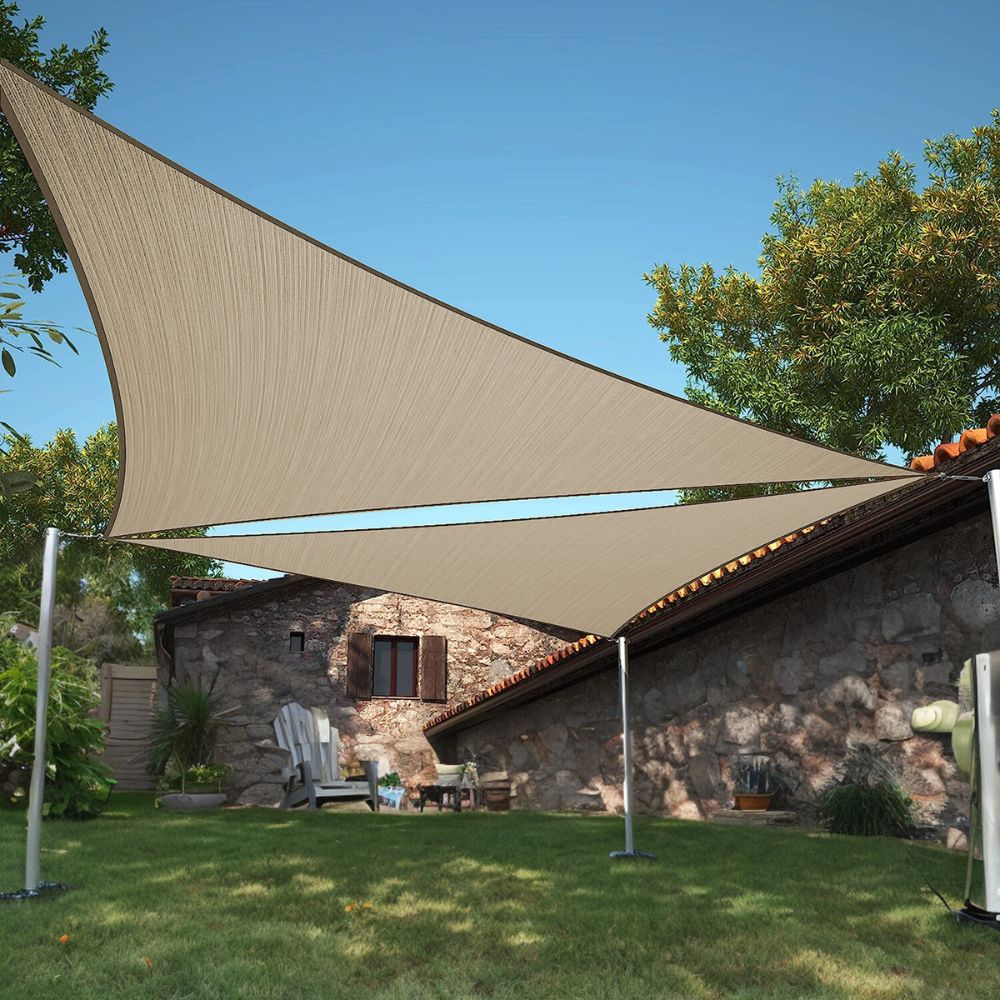When it comes to installing shade sails, one crucial aspect that often gets overlooked is the proper depth at which the posts need to be set. How deep do shade sail posts need to be? The structural integrity of your shade sail greatly depends on how deep these posts are buried in the ground. Sure, there are some challenges here and there when it comes to figuring out how deep to bury post for shade sail.
Fortunately for you, in this article, we’ll be delving into everything you need to know about determining the ideal depth for shade sail posts and why it is essential for ensuring a durable and stable installation. So, whether you’re a homeowner or a contractor looking to install shade sails, it’s vital to have a strong understanding of the important considerations behind post depth. So keep reading on to learn more about how deep do shade sail posts need to be!
Factors to Consider When Determining Post Depth
When it comes to the factors that need be considered when it comes to determining post depth, it’s actually pretty simple and small. These factors are going to include soil conditions, wind loads, and the size of the shade sail. So, let’s take a deeper look at each one.
Soil Conditions
Usually, the type of soil only matters when it comes to plants, right? Well, in this case, the soil conditions are actually going to play a fairly large role in all of this. The type of soil on your site will affect how deep your posts need to be buried. Soils with poor drainage or high water tables may require deeper post depths to ensure stability.
Wind
How much wind to you get in your yard? What about the area you’re wanting to install it in? Areas prone to high winds will require deeper post depths to withstand the force exerted by gusty conditions.

Size of the Shade Sail
Last but certainly not least is the sizing. The size of your shade sail also plays a role in determining post depth. Larger sails generally require deeper posts as they create more tension and put additional strain on the supports. Overall, when it comes to post-depth, this needs to be taken seriously. Not just in the name of aesthetics, but you don’t want any damage to be done. Having an inadequate post depth can lead to sagging or even collapse under stressors such as heavy rain or strong winds.
Understanding Soil Conditions and Their Impact on Post Depth
While we briefly covered soil conditions above, this is usually going to be the biggest factor when it comes to posting depth. In fact, when it comes to creating a solid foundation, this is going to matter most. Overall, soil conditions, such as density and composition, play a crucial role in determining how deep the posts should be buried.
Essentially, the type of soil present in your installation area will determine the ideal post depth. For instance, sandy or loose soils require deeper post placement to ensure stability, while clay or dense soils may allow for shallower depths. Plus, you need to keep in mind that areas with a high level of moisture content may also require deeper post-placement due to potential soil subsidence.

Recommended Post Depth for Different Types of Shade Sails
There’s no doubt about it that any homeowner is going to want durability and stability in the installation process. The depth at which the posts need to be set greatly impacts the structural integrity of the shade sail. Factors such as wind load, sail size, and soil conditions must be taken into account when determining the ideal post depth. For lightweight and smaller-sized sails, a general guideline suggests burying the posts at least 3 feet deep in well-compacted soil.
However, for larger and heavier sails or areas prone to high winds, it is advisable to increase the post depth up to 4-6 feet or even deeper if necessary. As stated before, the soil conditions also play a crucial role in determining post depth; loose or sandy soils require deeper footings compared to compacted clay soils.
Why is Proper Post Depth Important for Structural Integrity?
To put it simply, the depth at which the posts are set directly affects the stability and durability of the installation. If anything goes wrong, such as a major gust of wind or putting weight on it could result in it falling, which has the potential to cause a lot of damage. Usually, this gets overlooked, but it’s undoubtedly essential to understand and determine the ideal depth for shade sail posts. So, by burying the posts deep enough into the ground, you can ensure that they have adequate support to withstand various weather conditions and prevent them from toppling over or leaning.

What are Some Common Mistakes to Avoid When Determining Post Depth?
Mistakes happen, but when it comes to determining the post depth, it’s going to be your best bet to just entirely avoid any mistakes. So, here are some of the most common mistakes that homeowners tend to make when setting up and figuring out the post depth.
Underestimating the Force
This is usually one of the biggest mistakes that get made. The last thing you’re going to want to do is to underestimate the force and tension that gets exerted on the shade sail's structure. The wind is strong, and the weather conditions and other outdoor elements can be very strong. It’s crucial to take into account the specific requirements for your location, including wind speed and soil type, in order to determine an appropriate post depth. You can’t skip out on any of this, or else you’re going to risk a major disaster in your yard.
Not Compacting the Soil
So, it’s not only about soil conditions, but it’s also going to be about failing to adequately compact the soil around the posts during the installation process. So, why is this even needing to be done? Well, not doing so can lead to sinking or shifting of the posts over time, compromising the stability of your shade sail. So, properly compacting the soil ensures that it provides sufficient support and anchoring for long-term durability.
Overlooking Obstructions
Lastly, overlooking any underground utilities or obstructions in your excavation area can also be a costly mistake. Before digging holes for your shade sail posts, you’ll need to conduct thorough research or consult with professionals who can identify potential hazards, such as gas lines or electrical cables, that may interfere with proper post placement.

